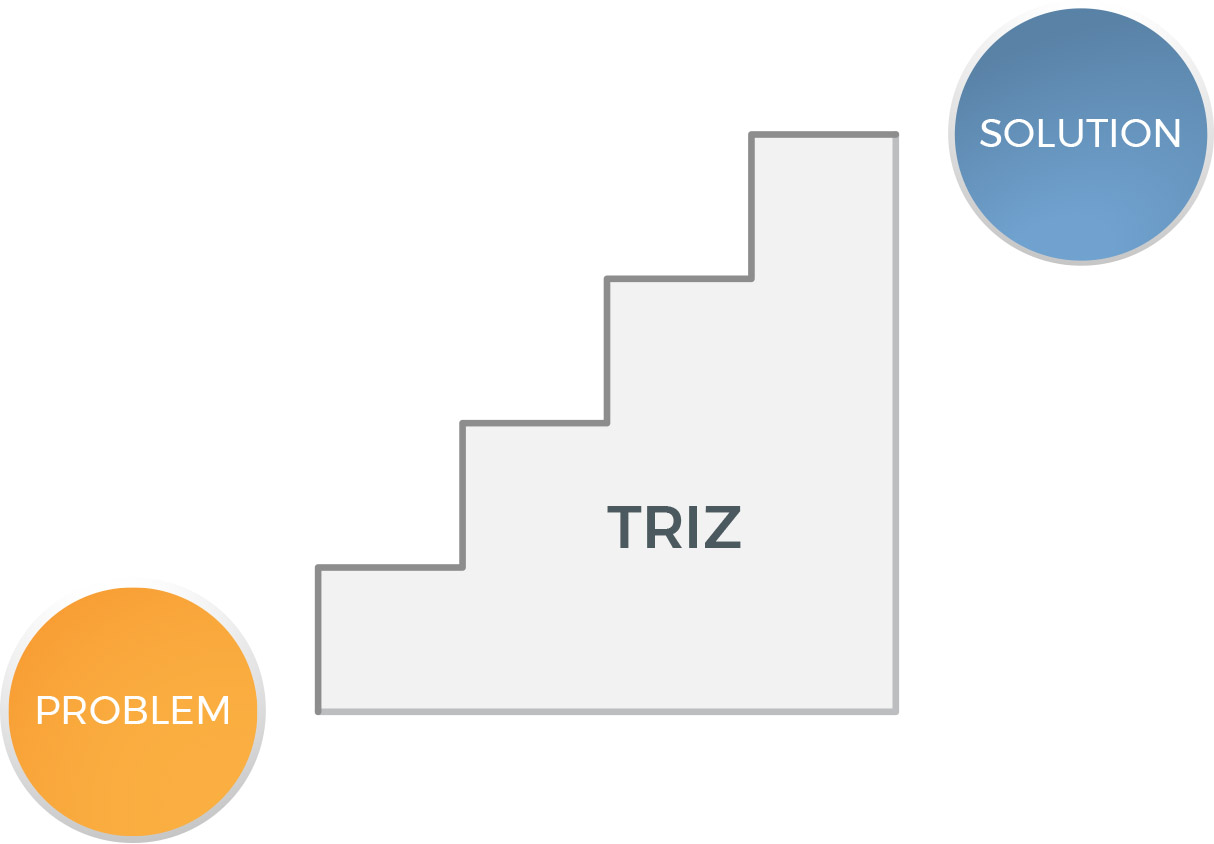TRIZ (Теория Решения Изобретательских Задач)
is the Russian acronym of the expression translated in the English language as “Theory of Inventive Problem Solving”.
It is a theory and a set of tools aimed to organize the process of ideas generation in a structured and systematic way, in order to make the creative process the result of an ordered process, in which each activity evolves in logic and sequential way from the previous one.
TRIZ is the result of over 50 years of research and analysis, carried out in Russia by Genrich S. Altshuller (1926-1998), engineer, inventor, and author of the theory, supported by friends and collaborators. Today, TRIZ theory appears as a powerful tool to manage efficiently innovation issues related to developing proficiently new products or processes according to a structured approach.

G. Altshuller and his collaborators focused studies and research activities on TRIZ originally on the theme of ideas generation, creativity in the engineering field and inventive problem-solving. Following, other TRIZ experts and authors promoting a systematic approach to innovation processes have experimented TRIZ theory for other applications and aims, such as innovation strategies, technology forecasting, and other strategic activities.
Some models of thinking, fundamental concepts and the logic of analysis developed inside the TRIZ Theory have a general character, beyond the problem-solving activity.
So TRIZ theory is able to be a methodological frame to support other tools and techniques in a systematic and structured way for activities such as analysis and research on systems, products, processes, and services, even in not technical fields.
Why TRIZ?
Through consecutive reformulations of the starting problem, based on abstraction and modeling processes, TRIZ supports the search of solutions from different perspectives and different level of abstraction. According to a convergent process, TRIZ assists the expert to really build the solution concept gradually rather than to make to spark an idea suddenly, as happens with other ideas generation techniques.
Based on an international survey on perceptions and uses of TRIZ, users declare [1]:
- To use the theory to support many activities such as new product development, process analysis, and development, industrial research, scientific research, activities related to industrial strategy and for not technical applications;
- To experience an increase in the number of generated ideas and an improvement in the quality of generated ideas;
- To plan further learning, internal deployment, and customization to his/her own context and needs, in order to gain deeper competencies and master higher potentialities of the theory.
Attendees of a basic learning path (Module 1 and Module 2 of Training Activities) often declare that:
- The theory promotes problem analysis and definition, rather than to skip directly to solutions generation;
- The theory supports identifying and uncovering different directions of the solution, without the need to undertake them;
- The theory encourages to focus on the problem definition and analysis, through the abstraction process;
- The theory is a pragmatic method to support ideas generation activities;
- The theory assists to formulate the right questions to address target problem, even if you don’t master all the technical competencies and related issues of the problem you are facing.
[1] Cavallucci, D. World Wide status of TRIZ perceptions and uses, http://etria.eu/documents/TRIZ_survey_V2.pdf 2009 (document accessed April 2015)European TRIZ Association, ETRIA www.etria.net
OTSM-TRIZ approach
Beginning in the ’80, the author of TRIZ G. Altshuller proposed to further evolve the theory in a general approach to solve multidisciplinary problems, and not only technical and engineering ones. Such an approach was appointed by G. Altshuller as General Theory of Powerful Thinking, whose acronym in the Russian language is OTSM.
Starting from the direction pointed out by G. Altshuller, his follower and TRIZ master Nikolay Khomenko (1954-2011) began to carry out a research study and made a considerable contribution to the development and dissemination of TRIZ, and for the development of OTSM-TRIZ. In its essence, starting from the logic and tools deducted by the TRIZ classic research, the OTSM-TRIZ approach aims to enhance the organicity and develop formalisms and models with a more scientific structure and a more general framework, with the ambition to support the analysis and the resolution of any problematic situation from the methodological point of view.
